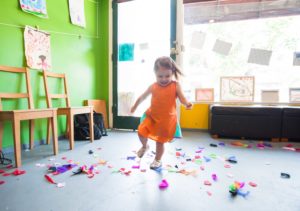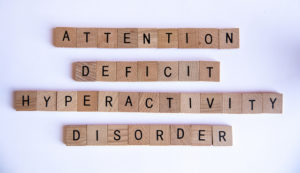Whether you are a teacher in school or a parent hoping to reinforce your child’s learning at home, it is very important to remember that children with ADHD need much stimulus and structure. If this can be done, the child will naturally want to learn more, becoming more inquisitive and focused on their lessons. If not, then expect them to quickly lose interest.
Dealing with ADHD in Children: Teaching Tips
To ensure that the child is paying attention, consider the following:
1. Avoid rote memorization whenever possible
Even amongst students without ADHD, rote memorization tends to be quite boring, making it doubly so for kids who have ADHD. To address this, you will need to become more creative when memorization may be required.
 Word association with pictures is one way to keep things interesting. Another is through mnemonic devices to remember lists such as “ROY G BIV” (red, orange, yellow, green, blue, indigo, violet) if they need to recall the colors of the rainbow. The use of music (e.g. songs, rap) can also help in certain concepts. Though it is challenging to come up with new methods, it will be well worth it once the child is able to grasp and enjoy learning.
Word association with pictures is one way to keep things interesting. Another is through mnemonic devices to remember lists such as “ROY G BIV” (red, orange, yellow, green, blue, indigo, violet) if they need to recall the colors of the rainbow. The use of music (e.g. songs, rap) can also help in certain concepts. Though it is challenging to come up with new methods, it will be well worth it once the child is able to grasp and enjoy learning.
2. Involve the child’s interests
In many classrooms today, teachers try to connect with their students by using examples that students can relate to such as gadgets, the latest songs, and the like. This too is a very effective method for children with ADHD.
 For example, if the child loves superheroes, it may greatly help to have Spider-Man, Batman, and Wonder Woman involved in their math, English, or science subjects. By doing this, they may become even more inquisitive about the lesson.
For example, if the child loves superheroes, it may greatly help to have Spider-Man, Batman, and Wonder Woman involved in their math, English, or science subjects. By doing this, they may become even more inquisitive about the lesson.
Of course, you should try to mix things up with other favorites such as candy, entertainers, or video games lest they learn to only focus when superheroes are involved. But if the topic is especially difficult, ensure that Superman or the Hulk are involved somewhere.
3. Engage the senses
Since stimulation is key for a child with ADHD, it is important to actively engage their senses in their activities for maximum learning. It helps to ask them for their preferred sense stimulus, but the more senses involved, the better.
The following are some suggestions for each sense that one can use in activities:
- Sight – colorful materials, including black and white variants; 3D pictures; or dioramas.
- Hearing – reading out loud; audiobooks; or music while studying.
- Smell – scented materials (e.g. pencils, stickers, paper); or the use of incense and perfumes.
- Taste – approved snacks of varying tastes (e.g. sweet, sour, salty) while studying.
- Touch – fidget items; building blocks; clay; or the use of tools and musical instruments.
4. Switch up the subjects
Another way to stimulate the child’s mind is to switch subjects when they start to become bored. If the learning is at home, this could be a regular practice (e.g. 20 minutes for History before switching to Math) or one could opt to change once signs of restlessness occur.
At school, this may be a bit more difficult. But if a teacher is creative, it might be possible to jump to a different topic within the same subject (e.g. 25 minutes of English grammar before switching to poems) to keep every student interested.
5. Allow some movement
If the child with ADHD has difficulty sitting still, it may be best to allow them to move, albeit with limitations. They can read or recite while walking, or write while standing up. If they fidget much, then allow them to use fidget toys while studying.
For wigglers, it may be good for them to sit on a large sitting ball, a sitting disk, or a swivel chair. Again, the idea here is to allow their body to move without compromising their mental concentration, to ensure that they are studying and not playing.
6. Batch the material
Since concentration is an issue for those with ADHD, it helps if the child’s homework or supplementary learning materials are broken into manageable chunks. In this way, the child can focus better. For supplementary work, always keep in mind that quality is better than quantity so there is no need to bombard the child with too much.
 But for school work or homework, it can help to physically block out the other problems by covering them with a piece of paper. This allows the child to just focus on one problem at a time. This method is also helpful when reading as the multitude of words and pictures on the page may draw their attention elsewhere.
But for school work or homework, it can help to physically block out the other problems by covering them with a piece of paper. This allows the child to just focus on one problem at a time. This method is also helpful when reading as the multitude of words and pictures on the page may draw their attention elsewhere.
7. Keep rules and expectations consistent
A big difficulty for kids with ADHD is maintaining a sense of structure in their life, even though they know it is important and it is something they crave. This is why it is necessary that rules and expectations are consistent. The consequences and rewards must also be fair and well explained prior to implementation.
8. Maintain a regular study and break schedule
Similar to rules and expectations, but in a separate category of its own, is the need for a regular learning schedule. Studies show that people operate best if there is a predictable and consistent schedule (e.g. regular time for meals, work, study, relaxation). The same is true for kids that have ADHD. If schedules are regular, the child may even learn to look forward to their upcoming studies.
The break times as well need to be scheduled as the child may be looking forward to a short rest and a change in activity. An audible timer can be very helpful to give order to the breaks and engage the child’s auditory senses.
9. Help them to calm down
Children with ADHD easily become frustrated. As a parent or teacher, it is important to teach them how to calm down so that they can focus once more.
 One technique that works well with a child with ADHD is to have them sit cross-legged on the floor, close their eyes, and breathe deeply and slowly as they rock back and forth. After some intervals of rocking, ask them to cut their movement in half, and then in half again, until they are eventually still. If you believe that they are still not at ease, continue informing them to cut their movement in half, since in their mind, they may still be moving.
One technique that works well with a child with ADHD is to have them sit cross-legged on the floor, close their eyes, and breathe deeply and slowly as they rock back and forth. After some intervals of rocking, ask them to cut their movement in half, and then in half again, until they are eventually still. If you believe that they are still not at ease, continue informing them to cut their movement in half, since in their mind, they may still be moving.
10. Keep calm and give lots of TLC
Teaching children with ADHD requires a lot of patience. Becoming angry whenever they get frustrated does not help anyone. Instead, they will just resent you more. To earn their respect and maintain their love of learning, parents and teachers need to give them respect, love, and care.
It helps to remember that children with ADHD are beautiful souls from God, given to us for a time to raise and love. Additionally, we must recall that God has a good plan for each one of them. If these can be kept in mind, it will be easier to become more patient and understanding.
Seeking Help Through Christian Counseling
Despite the many educational options for children with ADHD, sometimes parents can still feel overwhelmed with the task, causing them to view the situation negatively. If such feelings have been going on for some time, it is best to seek help soon before things get worse.
In Christian counseling, the abovementioned learning techniques can be discussed so that the parents feel more confident in what they are doing for their child. But most importantly, the Christian counselor can help parents view their family’s circumstances from God’s viewpoint, allowing them to endure the difficulties with a happier heart.
Conclusion
Raising and teaching a child with ADHD is a big challenge, but it can be done if parents and teachers are willing to be creative, patient, and understanding. It is also important to recall that they are God’s creations, given to us for a time to raise and protect.
But if the situation becomes difficult, there is no shame in asking for a help. It is said that it takes an entire village to raise a child and this is particularly true for children with ADHD. Professional help is available through Christian counseling should the child need additional help or if the family is having difficulty adjusting to the child’s special needs.
“Problem Child”, Courtesy of Patrice Audet, Pixabay.com, CC0 License; “Unsupervised”, Courtesy of Mike Fox, Unsplash.com, CC0 License; “ADHD Scrabble Tiles,” courtesy of PracticalCures.com, Flickr Creative Commons 2.0, CC0 License; “Smart”, Courtesy of Frank McKenna, Unsplash.com, CC0 License


